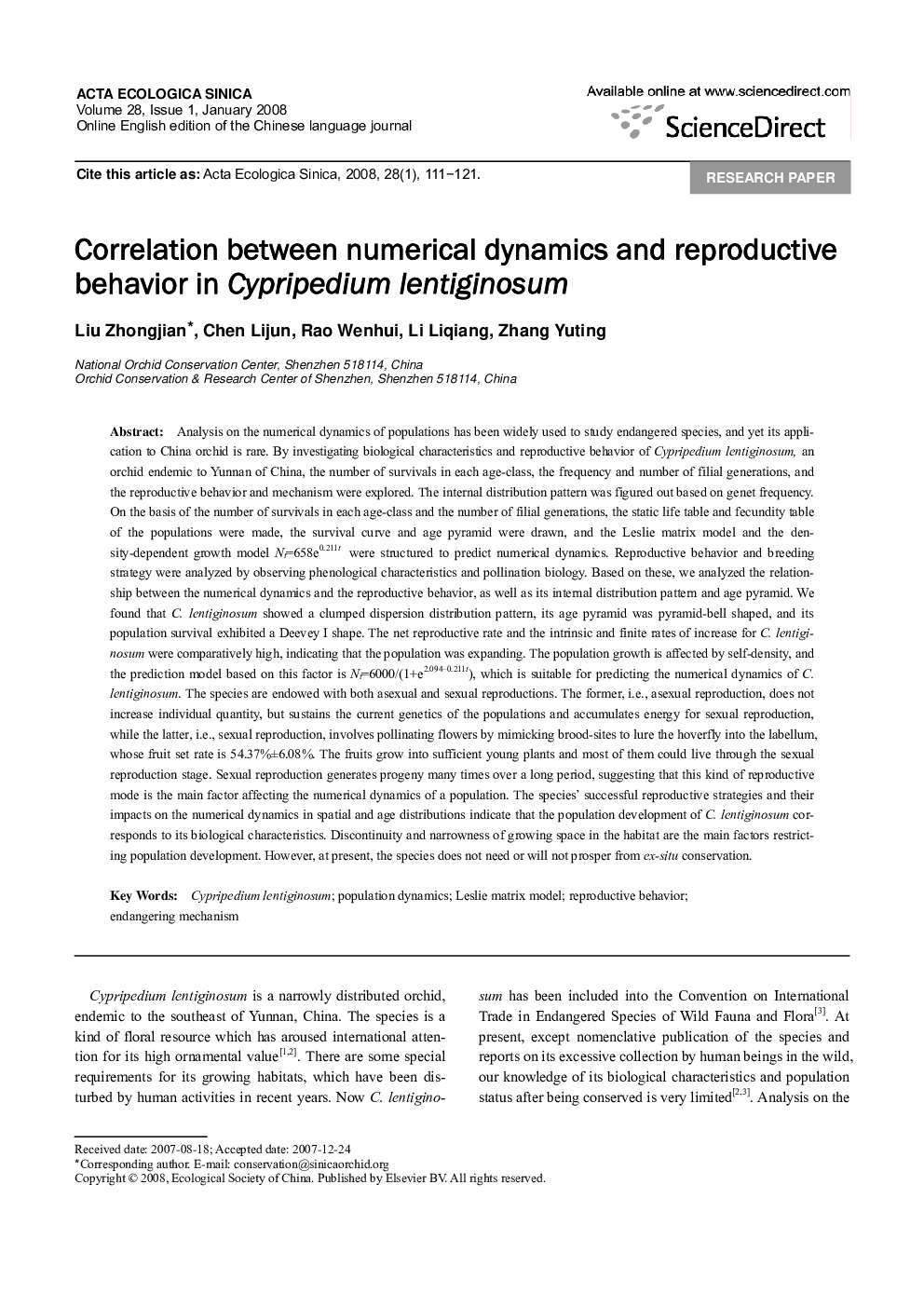| کد مقاله | کد نشریه | سال انتشار | مقاله انگلیسی | نسخه تمام متن |
|---|---|---|---|---|
| 4380348 | 1303987 | 2008 | 11 صفحه PDF | دانلود رایگان |

Analysis on the numerical dynamics of populations has been widely used to study endangered species, and yet its application to China orchid is rare. By investigating biological characteristics and reproductive behavior of Cypripedium lentiginosum, an orchid endemic to Yunnan of China, the number of survivals in each age-class, the frequency and number of filial generations, and the reproductive behavior and mechanism were explored. The internal distribution pattern was figured out based on genet frequency. On the basis of the number of survivals in each age-class and the number of filial generations, the static life table and fecundity table of the populations were made, the survival curve and age pyramid were drawn, and the Leslie matrix model and the density-dependent growth model Nt=658e0.211t were structured to predict numerical dynamics. Reproductive behavior and breeding strategy were analyzed by observing phenological characteristics and pollination biology. Based on these, we analyzed the relationship between the numerical dynamics and the reproductive behavior, as well as its internal distribution pattern and age pyramid. We found that C. lentiginosum showed a clumped dispersion distribution pattern, its age pyramid was pyramid-bell shaped, and its population survival exhibited a Deevey I shape. The net reproductive rate and the intrinsic and finite rates of increase for C. lentiginosum were comparatively high, indicating that the population was expanding. The population growth is affected by self-density, and the prediction model based on this factor is Nt=6000/(1+e2.094–0.211t), which is suitable for predicting the numerical dynamics of C. lentiginosum. The species are endowed with both asexual and sexual reproductions. The former, i.e., asexual reproduction, does not increase individual quantity, but sustains the current genetics of the populations and accumulates energy for sexual reproduction, while the latter, i.e., sexual reproduction, involves pollinating flowers by mimicking brood-sites to lure the hoverfly into the labellum, whose fruit set rate is 54.37%±6.08%. The fruits grow into sufficient young plants and most of them could live through the sexual reproduction stage. Sexual reproduction generates progeny many times over a long period, suggesting that this kind of reproductive mode is the main factor affecting the numerical dynamics of a population. The species' successful reproductive strategies and their impacts on the numerical dynamics in spatial and age distributions indicate that the population development of C. lentiginosum corresponds to its biological characteristics. Discontinuity and narrowness of growing space in the habitat are the main factors restricting population development. However, at present, the species does not need or will not prosper from ex-situ conservation.
Journal: Acta Ecologica Sinica - Volume 28, Issue 1, January 2008, Pages 111-121